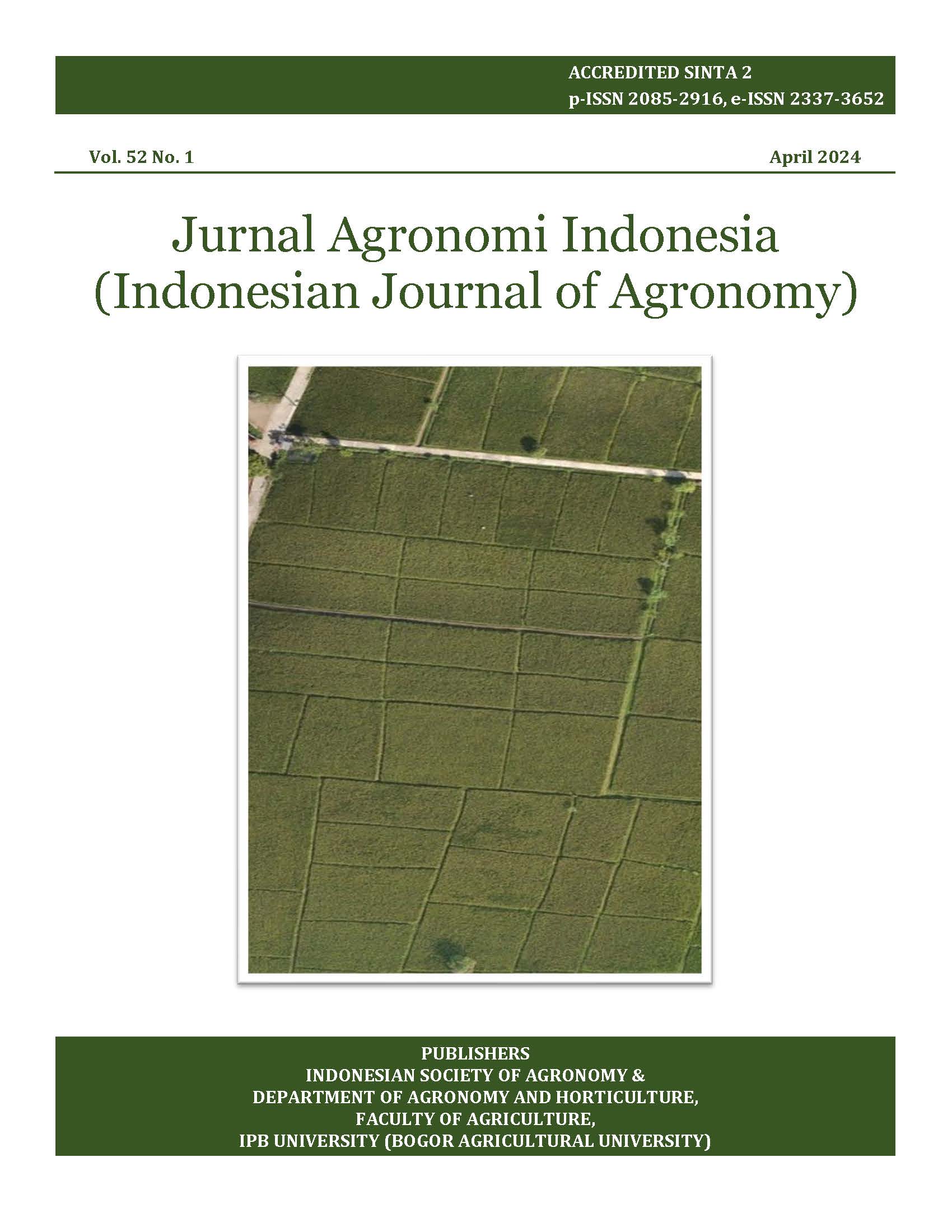Dynamics of weeds and main pests in different rice planting systems supplemented with biodecomposer
Abstract
Biodecomposers are used as an alternative in pest and weed management by utilizing antagonistic microbes. This study aimed to identify the optimal treatment for suppressing weed growth and controlling the main rice pests, promoting environmentally friendly agricultural practices. Observations were made on three phases of rice growth on land that used biodecomposer and did not use biodecomposer. Weed sampling used a quadrant, which represents each treatment. All weeds were analyzed for density and summed dominance ratio. Pests were observed from the sweep net method. Pests were analyzed with the Shannon-Wiener diversity index (H’). Ten species of weeds are found; the most common and dominant was Cyperus difformis, while the least were Ipomoea aquatica and Ludwigia octovalvis. There were seven pest species; the most common was Nephothettix virescens, while the least was Valanga nigricornis. Using bio-decomposers combined with a two-row planting system was effective in suppressing the development of weeds and pests with a decreasing trend as the rice growing phase increases. Biodecomposers are environmentally friendly even though the process is slow, and have the potential to reduce weeds and pests.
Keywords: biodecomposers, Jarwo 2:1, Tegel, trichoderma













